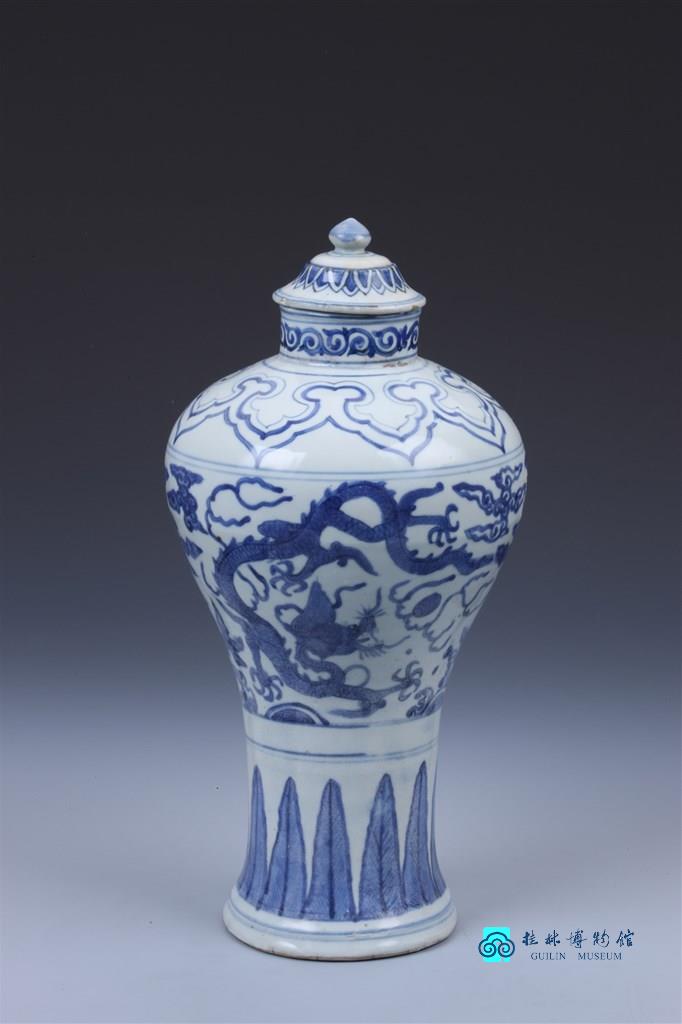Prunus Vase with Baby Mice Liquor
Prunus vase, as a multi-functional vessel for storing wine, exhibition and decoration, was first seen in the Tang Dynasty and got popular in the Song Dynasty. The ancient people also arranged prunus vases beside coffins at funeral for embedding their best wishes of long-lasting safety.
This blue-and-white prunus vase, unearthed from the joint tomb of Jingjiang Prince Wenyu, Zhu Lvtao, of the Ming Dynasty and his wife, is the most authentic proof. It is glistening and mellow in glaze colors. The blue design, graceful in luster and elegant in modeling, is like a slim lady. The lid is exquisitely designed, like a small delicate bamboo hat, which was solidly sealed at the time of excavation. After opening the vase, people surprisingly found what was contained in it was not the commonly seen transparent grain wine, but some crystal-clear, fragrant, light red liquor with red dates, longans, litchis and even three baby mice. This is baby mice liquor, a traditional medicinal liquor that prevailed in ancient Guangxi. According to the traditional Chinese medicine, baby mice supplemented with red dates, longans and litchis can treat women's disease caused by deficiency of vital energy and blood.
This vase of baby mice liquor is regarded as the oldest physical evidence of medicinal liquor, thus important to the study of Guilin's liquor culture and health maintenance.



